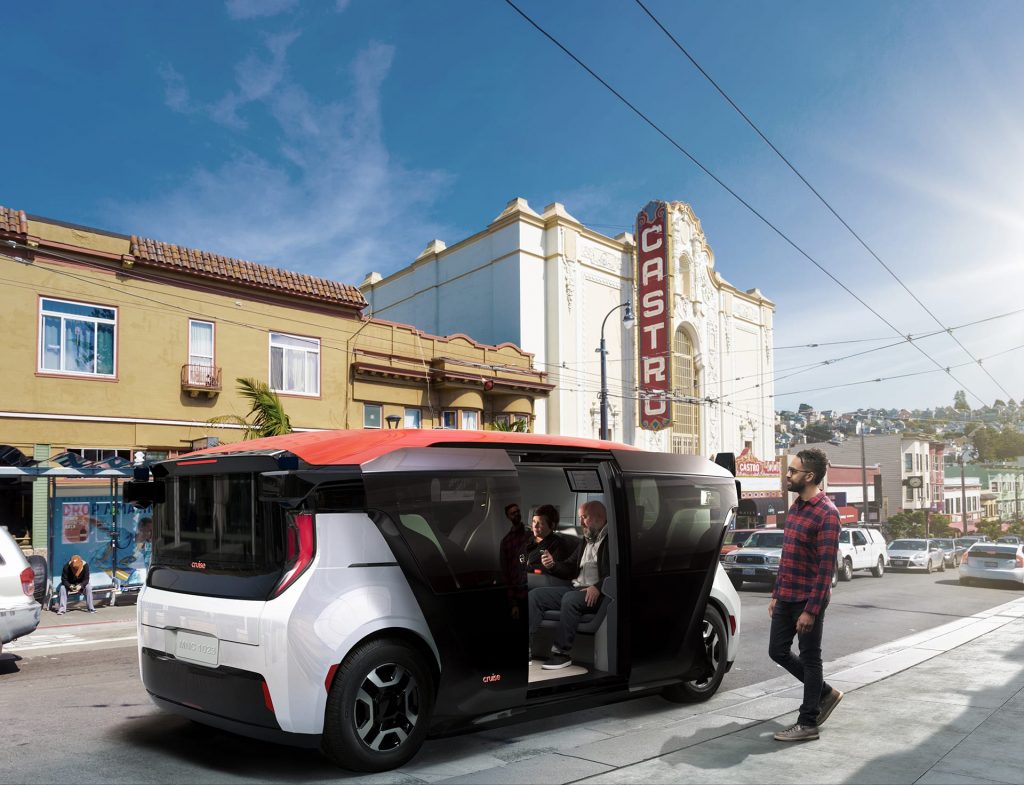Cruise reveals first vehicle without a safety driver
GM’s self-driving vehicle unit Cruise has been testing self-driving cars for a long time, but they are now launching their first service without a safety driver. What’s more: their custom-built shuttles don’t even feature controls like a steering wheel.
Up to this point, most trials with autonomous vehicles on the road are done with safety drivers that can take over control in case the computers get overwhelmed or if they do not behave in a safe way. The Cruise Origin though, will be different.
Uber
The Cruise Origin, developed in cooperation with Honda, is designed as a driverless shuttle bus that will take on established ridehailing players like Uber and Lyft. However, a precise timing has not been disclosed.
Dan Amman, CEO, Cruise, told the press that testing the shuttles would first begin on private campuses. A launch on public roads could follow at a later stage.
The Cruise Origin is built on a custom-developed electric platform developed by GM. Honda contributed to the engineering and production of the shuttle.
In November 2017, GM announced it planned to launch a ridehailing service with self-driving vehicles in urban areas by 2019. So far, no such service has been launched.
Cars or buses?
Until a few years ago, industry insiders were confident fully autonomous vehicles were within reach, even though their predictions on when they could be launched as commercial products varied. Today, however, there seems to be a growing consensus that full autonomy may turn out to be much further away.
Another issue for autonomous vehicles is price. The technology required to have a car drive by itself in all possible conditions, will cost around €15,000 to €20,000 more than a human-driven vehicle. According to Jean-Philippe Imparato in a recent interview with Fleet Europe, nobody will pay for that. “That’s why we as a brand say: autonomy up to level 3 is affordable for cars. Level 4 is for shuttle buses and other public transportation vehicles.”
“Economic scalability remains a challenge for AVs,” said Moran David, General Manager for Mobileye’s Intelligent Mobility Solutions Division in North America in a recent interview with Global Fleet.
In a blog post, Mr Amman said: “It is our mission to improve safety by removing the human driver, reduce emissions by being all-electric, and reduce congestion through making shared rides more compelling by providing an awesome experience at a radically lower cost. Only then will we truly move beyond the car to the transportation system that we deserve — one that is safer, more affordable, and better for us, for our cities, and for our planet.”
Image: Cruise Origin in San Francisco’s Castro District
Source: https://www.globalfleet.com
FLEET MANAGEMENT NEWSLETTER
Join to our NEWSLETTER; you’ll get the latest news, articles, publications, training, conferences, events, congresses, and white papers related to Fleet Management, Mobility and Automotive IN your email fortnightly.




